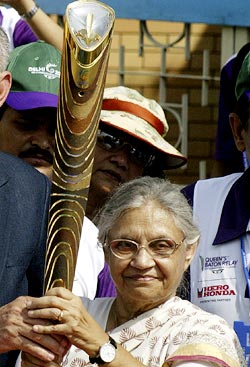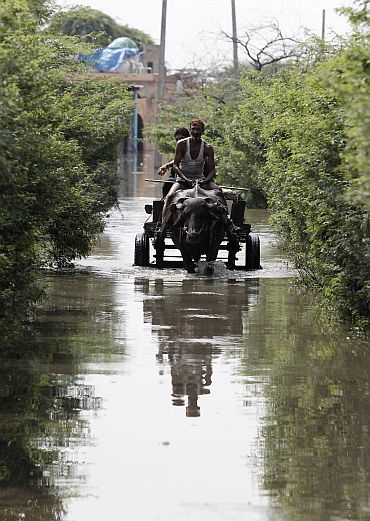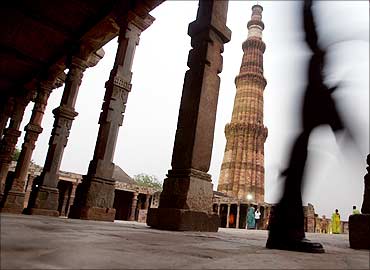The build up to the event -- biggest in India after the 1982 Asiad -- was blighted by construction delays and preparations went virtually down the wire, raising apprehensions about the city's ability to host the Games.
The government had to grapple with harsh criticism for missed deadlines, complaints of shoddy construction works and allegations of corruption in CWG spendings in the run-up to the sporting extravaganza.
The outburst became more intense particularly when an under-construction foot over-bridge outside the main Jawaharlal Nehru Stadium fell off just weeks before the event, injuring 27 labourers.
The army later constructed a Bailey bridge at the site but the collapse saw stepped-up global criticism about Delhi's overall preparation for the October 3-14 Games. Concerned over negative media publicity leading to lack of public enthusiasm about the Games, Chief Minister Sheila Dikshit had to appeal to people to celebrate the event as a 'national festival' while blaming the absence of coordination and multiplicity of authorities for the delays.
However, deriving confidence from hosting of the Games successfully, a beaming Dikshit announced that the city was 'now confident' of hosting even the Olympics as it developed world class stadia and other infrastructure.There was a huge spending on infrastructure
Image: The opening ceremony of the Commonwealth GamesA four-lane four-km-long elevated road from Lodhi Road to Sarai Kale Khan, linking the Games Village to the Jawaharlal Nehru Stadium was one of the major infrastructure built by the government which reduced travel time between the village and stadium to six minutes from usual 40 minutes.
The government also modernised its bus transport network by inducting over 3,500 swanky low-floor buses into the Delhi Transport Corporation fleet which largely took care of the transportation needs of officials and athletes during the event.
Another important development was the clearance of the mercy petition file of Afzal Guru, sentenced to death in the Parliament attack case, by Delhi government after sitting over it for nearly four years.
The government cleared the file and sent it to Centre unambiguously backing the Supreme Court's verdict of capital punishment to Guru with a rider that the law and order implications should be closely examined while carrying out the execution in the city.Rains wreaked havoc in September
Image: A man drives his cart through a flooded street in DelhiHeavy rains and release of over 60 lakh cusecs of water by neighbouring Haryana into Yamuna in mid-September resulted in the river's water level surging by over two metres above the danger mark and inundating several low-lying areas in East Delhi. The government had to evacuate and provide food and shelter to over 4,000 people for a couple of weeks.
Rising cases of dengue just ahead of the CWG also gave sleepless nights to the city government which took series of measures to contain it. The government had to face embarrassment when Central Vigilance Commission in a report in July pointed large-scale procedural violations, use of sub-standard material and financial irregularities in six CWG projects carried out by its public works department.
The Comptroller and Auditor General (CAG) and CVC are now carrying out scrutiny of various CWG projects implemented by the city government.The CWG expenditure caused a fund crunch
Image: The Qutub MinarHowever, bowing to opposition pressure, government later withdrew a four per cent VAT on cooking gas giving a Rs 12-13 relief to consumers though it did not roll back the withdrawal of subsidy for LPG cylinders.
The government also withdrew the five per cent VAT on CNG while slashing the VAT on diesel to 12.5 per cent from the proposed 20 per cent. The winter session of Delhi Assembly witnessed a scathing attack on Lieutenant Governor Tejinder Khanna when the chief minister and several of her party MLAs targeted him on the floor of the House, accusing him of undermining the powers of her government and interfering in its functioning.
Unhappy over Khanna's rejection of Delhi Cabinet's decision on raising circle rates, Dikshit even went on to say that assembly and the city government should be done away with if they are not allowed to function. "We cannot work with irritants. We cannot work under duress," she said, exposing the bitterness between the two.





article